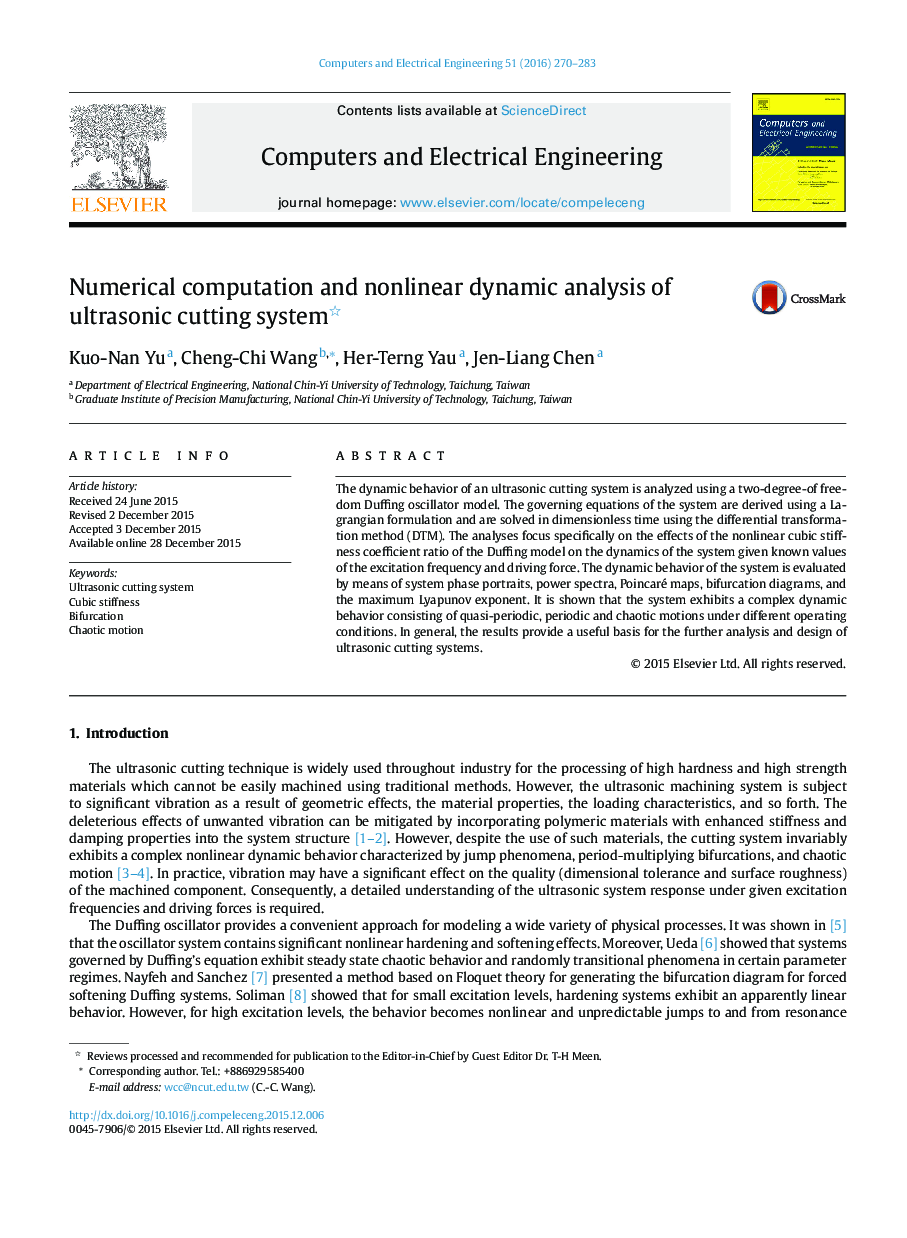| کد مقاله | کد نشریه | سال انتشار | مقاله انگلیسی | نسخه تمام متن |
|---|---|---|---|---|
| 453627 | 694983 | 2016 | 14 صفحه PDF | دانلود رایگان |
Highlight
• Analyze the nonlinear cubic stiffness coefficient ratio effect for ultrasonic cutting system.
• Ultrasonic cutting system is designed for stable and synchronized vibration when the excitation force is controlled at 2.0 with the interval of nonlinear cubic stiffness coefficient ratio 0.006 ≦ η < 1.248.
• For small values of η, the non-periodic motion is more obvious meaning that the larger hardening cubic stiffness coefficient causes more severely unsteady behavior.
• For the variation of dynamic behavior, ultrasonic cutting system includes periodic, quasi-periodic and chaotic motions under specific operating parameters.
The dynamic behavior of an ultrasonic cutting system is analyzed using a two-degree-of freedom Duffing oscillator model. The governing equations of the system are derived using a Lagrangian formulation and are solved in dimensionless time using the differential transformation method (DTM). The analyses focus specifically on the effects of the nonlinear cubic stiffness coefficient ratio of the Duffing model on the dynamics of the system given known values of the excitation frequency and driving force. The dynamic behavior of the system is evaluated by means of system phase portraits, power spectra, Poincaré maps, bifurcation diagrams, and the maximum Lyapunov exponent. It is shown that the system exhibits a complex dynamic behavior consisting of quasi-periodic, periodic and chaotic motions under different operating conditions. In general, the results provide a useful basis for the further analysis and design of ultrasonic cutting systems.
The system bifurcation diagrams for x1 are shown for harmonic excitation force F˜ = (a) 1.14 × 10−3, (b) 0.1, (c) 1.0 and (d) 2.0, respectively. There are two intervals of nonlinear motion at 0 < η < 0.006 and 1.248 ≦ η ≦ 2.0, respectively when harmonic excitation force (F˜) increases to 2.0.Figure optionsDownload as PowerPoint slide
Journal: Computers & Electrical Engineering - Volume 51, April 2016, Pages 270–283
